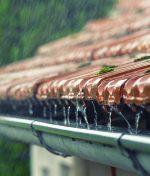Protect Your San Diego Home from Floods

- December 13, 2024
- byadmin
- Flood Restoration
Flooding is one of the most common natural disasters that can cause significant damage to homes in San Diego. From coastal storms to heavy rainfall and unexpected plumbing failures, floods can disrupt lives and lead to costly repairs if not addressed promptly. Protecting your home from potential flood damage is essential for preserving your property and ensuring the safety of your family.
Practical steps to safeguard your San Diego home from floods and minimize the risks associated with water damage.
1. Understand Your Flood Risk
San Diego’s diverse landscape includes coastal areas, valleys, and hillsides, each with unique flooding challenges. Identifying your home’s flood risk is the first step in protecting your property.
- Check FEMA flood maps: These maps provide information on flood-prone zones in your area.
- Assess your property’s elevation: Homes located in low-lying areas or near water sources are more vulnerable to flooding.
- Consider local drainage systems: Poorly maintained storm drains and natural waterways can exacerbate flooding during heavy rain.
2. Invest in Flood Insurance
Standard homeowner’s insurance policies often do not cover flood damage. Flood insurance provides essential financial protection in the event of a disaster.
- Evaluate coverage needs: Consider the value of your home and belongings to determine the appropriate coverage amount.
- Enroll in the National Flood Insurance Program (NFIP): This federal program offers affordable flood insurance options.
- Document your property: Keep an inventory of your home’s contents to streamline the claims process in case of damage.
3. Improve Your Home’s Flood Resilience
Making upgrades to your home can significantly reduce the impact of flooding.
- Install flood barriers: Use sandbags, water-filled tubes, or permanent flood barriers to block water from entering your home.
- Elevate critical utilities: Raise electrical panels, HVAC systems, and appliances above potential flood levels.
- Seal your foundation and walls: Apply waterproof coatings to walls and caulk cracks in the foundation to prevent water seepage.
- Upgrade drainage systems: Ensure that gutters, downspouts, and sump pumps are functioning properly to redirect water away from your home.
4. Maintain Your Home and Yard
Regular maintenance can reduce the likelihood of flooding and minimize damage if it occurs.
- Clear gutters and downspouts: Debris can block water flow, leading to overflows that damage your home.
- Trim vegetation near water sources: Overgrown plants can obstruct drainage systems and exacerbate flooding.
- Inspect your roof: Ensure shingles are intact and properly sealed to prevent water from leaking inside.
- Grade your yard: Adjust the slope of your lawn so water flows away from your home instead of pooling around its foundation.
5. Prepare for Emergencies
A flood emergency plan can help you respond quickly and effectively in the event of a disaster.
- Create an emergency kit: Include essentials such as flashlights, batteries, bottled water, non-perishable food, and a first aid kit.
- Develop a family communication plan: Establish a way to stay in touch and decide on a meeting point if evacuation becomes necessary.
- Stay informed: Sign up for local weather alerts and follow the advice of local authorities during a flood event.
- Know how to turn off utilities: Learn how to shut off water, gas, and electricity in case of an emergency.
6. Respond Quickly After Flooding
If your home experiences flooding, prompt action can minimize damage and prevent long-term issues like mold growth.
- Remove standing water immediately: Use a wet/dry vacuum, mop, or sump pump to extract water.
- Dry affected areas: Open windows, run fans, and use a dehumidifier to speed up the drying process.
- Inspect for mold: Flooded areas can develop mold within 24-48 hours. Address any signs of growth immediately.
- Document the damage: Take photos of your home and belongings for insurance claims.
How We Can Help
At RAMM Water Restoration, we know how stressful and overwhelming flood damage can be. That’s why we provide expert, compassionate, and friendly restoration services to San Diego homeowners. Our team is here to help you navigate every step of the process, from removing standing water to restoring your property to its original condition.
We specialize in flood damage restoration and mold remediation, using advanced techniques and state-of-the-art equipment to ensure your home is safe and sound. What sets us apart is our dedication to treating every customer with empathy and care, because we believe that recovery is more than just repairing your home—it’s about restoring your peace of mind.
If you’re looking for reliable, professional, and compassionate flood restoration services, contact RAMM Water Restoration today. Let us help you protect your home and family from the risks of flooding.









